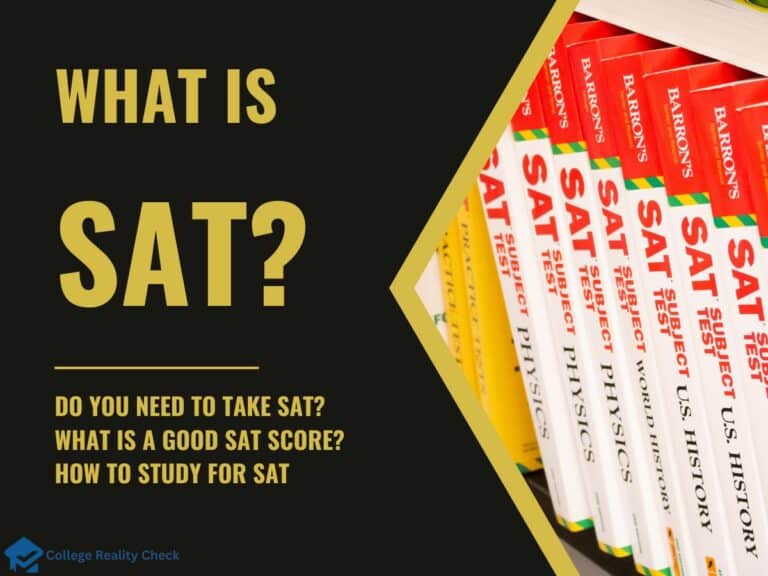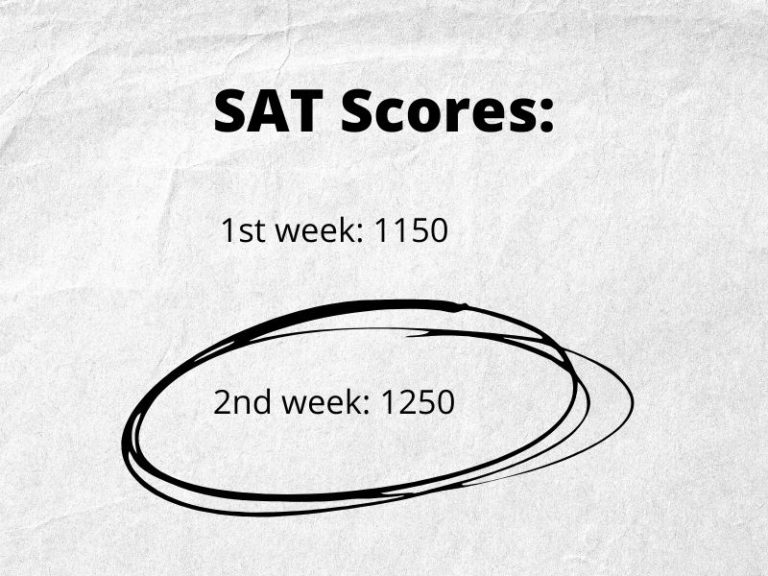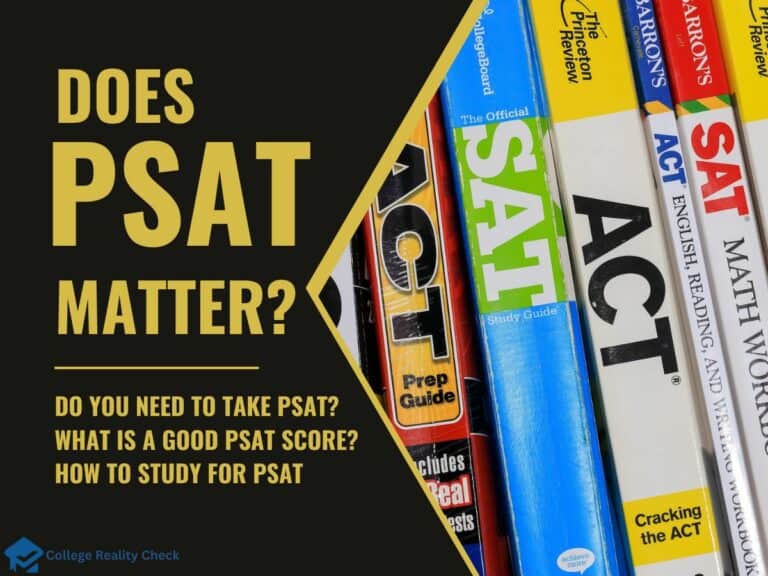SAT for Test-Optional School: Who and When Should Submit
Several colleges and universities in the United States turned test-optional in the last 5 years.
US News says that, in fact, more than 1,800 institutions of higher education of today do not require students bound for college to submit their SAT
scores.
Although members of the admissions committee will review them if included in the Common App or Coalition App.
Report your test scores if they are higher than the 50th percentile of the most recent incoming class at the college of your liking even if it’s a test-optional school. This is especially true if it’s a selective institution.
Refrain from submitting your test scores, meanwhile, if they are close to the bottom 25th percentile of the most recent incoming class.
Still want more answers as to whether or not you should report your SAT scores?
Continue reading until you reach the concluding paragraph of this article to have a much better idea of the role your test scores play when applying to a test-optional college.
When Should SAT Test Scores be Submitted to the College?
Percentile ranking for SAT test scores ranges from 1 to 99. It compares a test taker’s score with the scores of those who took the same standardized test.

Most colleges and universities use test score percentile ranking to see how an applicant did on the test compared to others.
Some students who took the SAT believe that their percentile scores are like grades out of 100%.
Your percentile score indicates the percentage of test-takers whom you have outscored.
For instance, if your test score is in the 80th percentile, it means that you scored higher than 80% of all test-takers.
It doesn’t mean that you got 80% of the questions right, as some college-bound high schoolers would assume.
There is no need to end up with a headache trying to figure out your percentile ranking with a calculator.
That’s because, fortunately, the College Board releases composite score data and matching percentile rankings.
Here’s a table of SAT percentile ranges:
| COMPOSITE SCORE | PERCENTILE SCORE |
| 1550 to 1600 | 99th |
| 1500 to 1550 | 98th to 99th |
| 1450 to 1500 | 96th to 98th |
| 1400 to 1450 | 93rd to 96th |
| 1350 to 1400 | 90th to 93rd |
| 1300 to 1350 | 86th to 90th |
| 1250 to 1300 | 81st to 86th |
| 1200 to 1250 | 74th to 81st |
| 1150 to 1200 | 67th to 74th |
| 1100 to 1150 | 59th to 67th |
| 1050 to 1100 | 51st to 59th |
| 1000 to 1050 | 42nd to 51th |
| 950 to 1000 | 34th to 42nd |
| 900 to 950 | 26th to 34th |
| 850 to 900 | 19th to 26th |
| 800 to 850 | 12th to 19th |
| 750 to 800 | 7th to 12th |
| 700 to 750 | 3rd to 7th |
| 650 to 700 | 1st to 3rd |
Keep in mind that the numbers change slightly every year.
This means that you should check the latest data on SAT composite scores in order to be able to determine your percentile ranking.
Note, however, that considering whether or not to send test results to a college depends on where you stand compared to admitted students for that college.
Where you stand nationally does not matter for admission purposes.
What is the Middle 50% for SAT?
The middle 50% or middle 50 represents the score range of the vast majority of test-takers. It is often used by colleges and universities when reporting college admissions test scores.
Test score-wise, checking out the middle 50% can give applicants an idea of their admissions chances.

Comparing your SAT or score with the scores of all test-takers in the country is one thing.
Comparing your standardized test scores with the scores of first-year students admitted into the school you like is another.
This is when the sheer importance of checking out what’s referred to as the middle 50% comes in.
Unlike percentile ranges that we talked about earlier, the middle 50% of test scores does not come from the College Board.
Instead, it comes from the college or university you wish to apply to.
Needless to say, in order to determine the middle 50% of the institution on your list, you will have to visit its website or access its Common Data Set (CDS).
Before we talk about determining whether or not you should submit your SAT score based on the middle 50%, let us first talk about it a little more as it can considerably impact your admissions chances.
The middle 50% comes in the form of a score range — for example, 1400 to 1500 or 33 to 35.
Instead of the scores of all test-takers in the US who took the same standardized test, the middle 50% concerns the test scores of all first-time freshmen students accepted into the academic institution.
Let’s take a look at a table comparing the middle 50% of the SAT scores of enrolled students at some of the most prestigious colleges and universities in the land:
| NAME | 25TH PERCENTILE SCORE | 75TH PERCENTILE SCORE |
| Boston University | 1430 | 1540 |
| Bowdoin College | 1440 | 1550 |
| Columbia University | 1510 | 1560 |
| Miami University | 1220 | 1410 |
| Rice University | 1500 | 1560 |
| Tulane University | 1430 | 1530 |
| University of Georgia | 1350 | 1490 |
| University of Pennsylvania | 1490 | 1560 |
| Villanova University | 1400 | 1500 |
| Wesleyan University | 1460 | 1560 |
The 25th percentile score for each school indicates that only 25% of the students it accepted scored lower than that.
On the other hand, the 75th percentile score for each institution indicates that only 25% of the students it welcomed to its campus have SAT scores higher than that.
So, in other words, the SAT scores of most admits are within the 25th to 75th percentile score range.
A test score within the middle 50% is good enough, which means that it’s safe to submit yours to the test-optional school you are applying to. Still, the decision is completely yours.
However, if your standardized test score is close to or above the 75th percentile for the college or university you are about to apply to, you should definitely submit it. This will make an already strong application stronger.
Or, if you feel that some components of your application aren’t solid, submitting a high test score is a fantastic idea.
As a general rule of thumb, the closer the test score to the 75th percentile, the better.
Needless to say, you might want to keep a low SAT score to yourself if the school has a test-optional policy. It could lower your admissions chances even if some parts of your application are impressive enough.
Should I Submit Test Results to a Test-Blind School?
There is no need to provide one’s standardized test score when applying to a college or university with a test-blind policy. This is true even if the test score is high.
The school’s admissions officers will not take a look at it, which means that it won’t have any impact on the admissions decision.
Initially, it may seem like test-optional schools and test-blind schools are one and the same.
It’s true that they share the fact that applicants can be admitted into them even without submitting their SAT scores.
What sets the two institutions apart is that test-optional schools consider test scores if they are submitted, while test-blind schools do not consider test scores at all even if they are submitted.
And this is why disclosing your standardized test score is not necessary when applying to a school with a test-blind policy.
As a matter of fact, a perfect 1600 SAT score or 36 ACT score won’t help boost your admissions chances.
Unlike test-optional colleges and universities, not a lot of test-blind institutions exist.
One of the most prestigious schools in the country with this policy is Caltech.
As a matter of fact, all institutions for higher education in California are test-blind. Some test-blind schools from other states include:
| NAME | LOCATION |
| Catholic University of America | Washington, DC |
| Dickinson College | Carlisle, Pennsylvania |
| Hampshire College | Amherst, Massachusetts |
| Loyola University New Orleans | New Orleans, Louisiana |
| Northern Illinois University | DeKalb, Illinois |
Since the admissions officers at test-blind schools will consider no standardized test scores, make sure that your overall application is a winner. This is especially true if the college or university is selective.
Should I Send SAT Scores to Test-Optional Schools
Because your test score may either boost or harm your application, it’s a definite must that you decide wisely.
As a quick rule of thumb, do not send SAT results if your scores are below the bottom 50 percentile of the incoming class. You can also call the college admissions office and ask whether to submit scores or not.
Should You Send SAT Scores if They Are Low
Provided that the institution you are applying to has a test-optional policy, choosing not to submit your low SAT score will not hurt your admissions chances. The school’s admissions officers will simply take a look at other components of your application when evaluating it.
Do colleges and universities prefer one standardized test over the other?
Contrary to what many graduating high school students believe, institutions, whether prestigious or otherwise, have no preference between the SAT and ACT. This means that you can take any of the two standardized tests or submit any of the two scores if you took both tests.
Disclaimer: The views and opinions expressed in this article are those of the authors and do not necessarily represent those of the College Reality Check.





